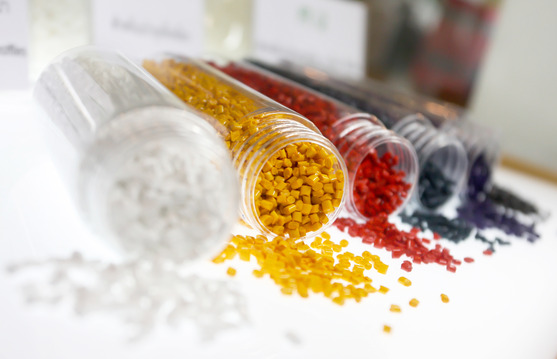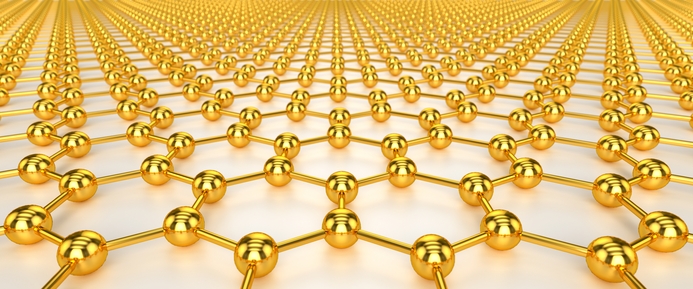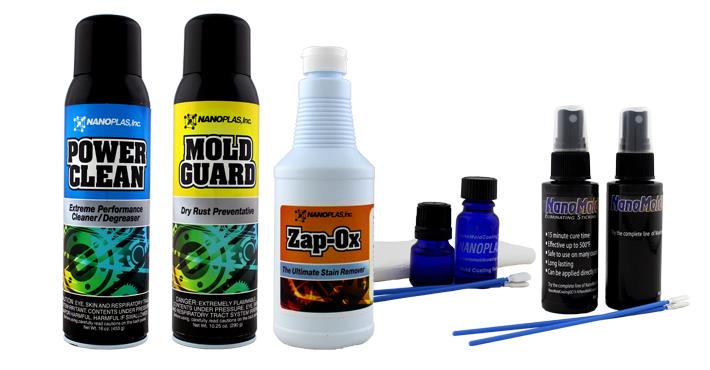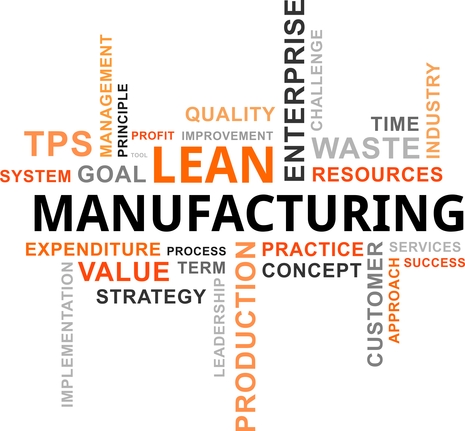
by Admin | Jun 3, 2015 | Manufacturing, Recent Posts |
 How SMED and Mold Maintenance Work Together
How SMED and Mold Maintenance Work Together
Time is money in the production business and the more you waste, the more you lose. The Single-Minute-Exchange of Die (SMED) methodology may allow you to successfully implement a lean production process in your injection molding business, and when combined with a progressive mold maintenance program, allow you to reduce the time needed for changeovers.
Why Lean?
Lean manufacturing aims to eliminate unnecessary waste during production, and uncovering ways that will add value by eliminating or decreasing other processes or variables than can adversely effect production.
With the rising cost of transportation and raw materials, it has become increasingly important for injection molders to produce a wide variety of products. With that product expansion, the need for efficiencies and cost reductions has generated a lot of interest in the lean method.
Potential Problems in High Variety Production
- Lengthy and difficult set up procedures.
- Expensive, high-tech machines are required to increase production capacity and flexibility.
- Waste arises out difficult changeovers, lack of adequate maintenance or equipment not being ready when needed.
SMED (Single-Minute-Exchange of Die and Maintenance
Globalization and Just-In-Time models have increased the need for production of smaller lots on a more frequent basis. This shift in format requires accelerated set-ups to maintain flexibility, to meet customer demands, and to remain competitive.
SMED allows you to make the necessary reductions in changeover time to achieve a just-in-time pace. The practices under this system achieve machine changeover in less than 10 minutes (single digit minutes) thus reducing the time during which production is down. The SMED approach does not only just reduce changeover times but also the overall labor involved.
The goals of SMED are:
- Reduction in inventory
- Reduced changeover time
- More efficient changeover process
- Flexibility for reduced batch/lot size
- Improve flexibility in equipment usage
- Reduce impact and downtime on equipment
- Meet customer demand
SMED Process
SMED involves certain steps, with a basic overview as follow:
- Elimination of Non-Essentials: Observe and record the areas where change outs are required, then eliminate all non-essential activities where possible, especially duplication. By eliminating non-essential activities it is possible to speed things up and reduce waste.
- External Set-up: Get all the materials and supplies to be used in place so that they are available when required. Some things to consider for this include: color code all items needed, create checklists and develop and maintain uniform standards and procedures
- Internal Set-up: Replace complex tools where possible with more simple equipment to prevent unnecessary waste. Use functional jigs and fixtures, levered or one-turn fasteners, preset guides, pins and notches. Remember the goal is to work efficiently but still but also effectively.
- Measure: The SMED approach entails change, but to know if you’re on the right track it is vital to measure business performance every time. It is a successful way of knowing if improvements are being made or not. Based on the results obtained, corrective or proactive measures can be taken. Consider the time lost/wasted as the benchmarks you will need to improve upon.
Benefits of Equipment Maintenance
The SMED system also requires proper maintenance of tools and equipment. When equipment is well looked after, it is more reliable. It will result in production efficiencies and lower costs due to fewer breakdowns and equipment downtimes. Also, with an effective maintenance program, equipment required will be available as and when necessary reducing wasted time and high costs due to idle equipment and staff.
It is also imperative that molds are stored properly to ensure optimal performance and longevity. Instead of leaving it on the floor or on pallets where it can sustain damage, it is best to store molds in a designated storage area or if possible on shelving or racks. Furthermore, it is best to use rust preventatives and grease that require little or no pre-production cleaning for start-up.
Many companies treat mold maintenance as an after thought, and have yet to explore how new products (like the Nanoplas line of mold maintenance products) can have a significant impact on their set-up and speed to press times. These gains in production efficiencies when combined with an approach like SMED can have a real impact on the bottom line.
To learn more about how the integrated family of Nanoplas products can help reduce scrap, increase production efficiencies and save time for your injection molding operation, contact us today!
by Nanomold Coating | Oct 10, 2014 | Manufacturing, Recent Posts |
Why implement lean manufacturing?
Here’s a quick article that outlines the benefits of the manufacturing mindset that is changing the way manufacturing is being done. The implementation of lean manufacturing through trying to make value flow at the pull of the customer prevents and eliminates the 7 categories of waste in your processes: Transport, Inventory, Motion, Waiting, Over-processing, Overproduction, and Defects.
Learn more about lean manufacturing by reading the full article HERE.

by Nanomold Coating | Oct 9, 2014 | Manufacturing, Recent Posts |
 Many complex and critical parts of machinery are difficult to make since they have challenging shapes and sizes. Furthermore, some injection molding companies do not always have the expertise, knowledge and equipment to make these complex parts. That’s why, when choosing your injection molder, it’s necessary to find out whether the molder has the specialization to mold complex parts using injection molding.
Many complex and critical parts of machinery are difficult to make since they have challenging shapes and sizes. Furthermore, some injection molding companies do not always have the expertise, knowledge and equipment to make these complex parts. That’s why, when choosing your injection molder, it’s necessary to find out whether the molder has the specialization to mold complex parts using injection molding.
The Pathway to Molding Complex Parts
Molding complex parts of varying shapes and sizes and using a variety of materials is an art as well as a science. The molder should have in-depth knowledge of different materials and a thorough understanding of the injection molding equipment. This will ensure the end customer gets a high performing and precision part.
The Process of Molding Complex Parts
The process of making complex parts with injection molding depends on using scientific methods, the latest analytical tools and process technologies to ensure the resultant parts offer high quality performance. Usually, the process is divided into four stages. These stages are as follows:
- Designing the complex part
- Selecting the right material
- Designing the mold
- Process control
Designing the Part: It’s important that the part is accurately and precisely designed, taking into consideration its end use. Designing the part allows for changes and adjustments during the initial stages and this helps reduce the overall cost of making the part as well as the timeline to make the part. During the designing phase, more emphasis is laid on maximizing the design to ensure it can be manufactured seamlessly and fulfill its end-use requirement.
Material Selection: This perhaps is one of the most important steps in the entire process of injection molding. When it comes to complex materials, often multiple materials are required. Hence, there is a need to select polymers that are compatible with one another as well as ones that can bond permanently and offer faultless performance.
Mold Designing: During the mold designing process, it is important and critical to keep a close watch on the mold cavity parameters, such as temperature and pressure. This is the stage where changes and adjustments are made in real-time to ensure the resultant complex parts are consistent in quality and performance. The mold design is dependent to a certain extent on the end-use of the part and the materials being used to make the part.
Process Control: Based on the design of the product and end-use, the appropriate injection molding technologies are used. There is a wide range of complex molding process, such as overmolding, multi-shot molding and insert molding, that can be used based on design and end-use. For instance, if there is a need to make the part appear attractive and stylish and give it a good grip, overmolding is often used during the injection molding process. This helps to reduce vibrations, improves resistance to UV rays, and it also enhances electrical insulation, thereby increasing the longevity of the part.
Injection molding can be customized to make any type of part, complex or otherwise. Each part is made using a set of production processes that help to hasten the production and molding of the part while maximizing its performance and quality.

by Nanomold Coating | Oct 2, 2014 | Manufacturing, Plastics, Recent Posts |
 As one of the fastest growing scientific and engineering technologies in the world, Nanotechnology holds an incredible amount of potential, especially in the manufacturing and plastics industries. But it is also being used in fields such as bioscience, medicine, engineering, pharmacology, material sciences, and defense.
As one of the fastest growing scientific and engineering technologies in the world, Nanotechnology holds an incredible amount of potential, especially in the manufacturing and plastics industries. But it is also being used in fields such as bioscience, medicine, engineering, pharmacology, material sciences, and defense.
And that’s just the tip of the iceberg.
What is Nanotechnology? It involves the engineering of functional devices or systems by controlling matter on an atomic and molecular scale. Now you begin to understand the near limitless potential. Scientists now have the ability to manipulate the atomic structure of the very molecules that make up the materials in the world around us.
This enormous growth potential and set of possibilities has given industries like manufacturing exciting improvements. The very structure of materials can be changed and improved through nanotechnology. For example, the plastics industry has embraced the use of nano-materials to provide plastics with greater conductivity, increased strength, flexibility and durability, and unique surface characteristics, etc.
Other nano-scale materials can be used in thin films to make them anti-reflective, self-cleaning, ultraviolet or infrared-resistant, antifog, anti-microbial, scratch-resistant, electrically conductive, anti-stick, water-repellent and oil-repellant…the list goes on.
NanoMoldCoating
Our own NanoMoldCoating product is one of these innovative new polymer films that creates optimal solutions to most of the typical issues in injection molding. The coating dramatically increases production output, while reducing costs associated with manual part removal, costly mold release agents, part scrap, slow cycle times, and repetitive mold maintenance due to sticking problems.
It’s the ideal choice for plastics and rubber processors in today’s competitive manufacturing environment, and it taps into the incredible potential of nanotechnologies.
If you’d like to find out more about Nanotechnology or NanoMoldCoating, please feel free to contact us HERE and we’ll be glad to answer any questions you have.

by Nanomold Coating | Sep 26, 2014 | Manufacturing, Recent Posts |
 The world of injection molding has advanced substantially, and new approaches are being adopted continuously to reduce costs. Most of these approaches look to methods of lean manufacturing to save material, eliminate secondary processes and operations, and use smaller presses.
The world of injection molding has advanced substantially, and new approaches are being adopted continuously to reduce costs. Most of these approaches look to methods of lean manufacturing to save material, eliminate secondary processes and operations, and use smaller presses.
Here are some more tips to reduce cost in the injection molding industry.
External Gas Molding
Also, known as EGM, external gas molding was initially developed to remove sink marks from the mold components. However, this technique can help reduce the weight as well as material cost by allowing the molder to mold thinner walls across the ribs. These thinner walls do not have any sink marks.
So, using gas-driven molding can actually help reduce costs. However, if you are using gas-assisted technology for molding components, it is necessary to design the component carefully. The engineers would have to change the order of the design sequence to ensure accuracy and precision of the part.
In this technique, gas is injected between the inner mold surface and the plastic resin, after the mold has been filled. The injected gas applied pressure on the resin and as it cools and shrinks, the resin is pushed against the opposite surface of the mold.
In-Mold UV Painting
This technology has been developed by a Danish company and is a unique method. The method can be used for insert molding and multiple component molding. It uses the stack molding process, wherein the center of the stack is divided into rotating core columns. The central motor indexes each column at 90 degrees, thereby giving the column four sides. This particular feature of the design ensures the stack mold is not just lighter, but also faster acting.
This technology manages to incorporate four different steps into a single cycle. These steps are injection molding, spray-painting the component, UV curing the sprayed paint and finally taking out and packaging the component. The technology can also be successful and can reduce costs if the molder develops a good paint delivery system and uses the right UV curing technology. Once these two processes are in place, they offer superior part performance. As the just molded part is painted, it ensures optimal bonding between the part and paint.
Better Equipment
In many cases, the equipment you use to make the molds is even more essential than the methods. Low quality or cheap equipment will not only produce lower quality molds, but will also lower productivity and increase down-time used for cleaning or repair.
That’s why Nano Mold Coating is the ideal choice for plastics and rubber processors in today’s competitive manufacturing environment. Our coatings dramatically increase production output, while reducing costs associated with manual part removal, costly mold release agents, part scrap, slow cycle times, and repetitive mold maintenance due to sticking problems. Find out more about our Nanotechnology HERE.
For more information about how you can reduce costs in the injection molding industry, please feel welcome to contact us.

by Nanomold Coating | Sep 18, 2014 | Manufacturing, Recent Posts |
 In the injection molding industry, waste is a problem. During the molding process, the generated waste can be expensive and…well, wasteful. Having a waste management system in place can help reduce waste and make the molding process more efficient and cost effective.
In the injection molding industry, waste is a problem. During the molding process, the generated waste can be expensive and…well, wasteful. Having a waste management system in place can help reduce waste and make the molding process more efficient and cost effective.
One of the best ways to reduce waste during the injection molding process is to adopt a lean manufacturing approach. When an injection molder uses lean manufacturing techniques for molding parts and components, it ensures resources are not wasted. While most molders associate lean manufacturing with cost reduction, it also can be used as an effective waste management system. The two go hand in hand.
Improving Mold Design
One of the reasons for waste accumulation is molding defective and flawed parts. This usually occurs due to poor or ill-conceived mold design. So, an injection molding company should have designers and engineers that work together as a team. This will ensure the mold design is made right the first time around and it will prevent you from having quality issues and handling customer complaints. In addition, when the mold design is perfect, it helps to improve cycle time.
When you make an effort to design the mold correctly in the beginning, it also will help to reduce your energy consumption. As a result, you will be able to pass on the cost saving to your customers by offering them competitive pricing.
Using Proper Molding Techniques
Another aspect of waste management is ensuring your operators are competent and know the right molding techniques. This means they need to be trained on using a variety of molding techniques based on design and resins used. When you train your molders, you reduce waste, as the manufacturing process occurs without a hitch and you do not have to deal with machine or press damage.
Nano Mold Coating
Using our scientifically advanced plastic mold coatings, greases, lubricants, cleaners and corrosion control products will also help manufacturers significantly reduce costs while eliminating the waste of conventional methods.
Nanoplas is a leader in bringing innovative Nano Technology products to the industrial market. Our coatings are easy to apply and last up to 300,000 parts; and they are a great way to combat high scrap rates, streaks and drags, as well as extended cycle times.
Long Cycle Times
Often a lot of waste occurs because of unnecessary cycle times. This happens due to incompetence of the molder, poor design of the mold and/or poor design of the part. To prevent waste, your waste management system should try and reduce cycle times to deliver best results without wasting material.
Once you manage to change the waste mindset in the workroom, your business will benefit tremendously. Lean manufacturing is the best way to achieve this goal. You will also be able to boost your employees’ morale as the result of a cleaner space, which will lead to better productivity, and you will be able to build a reputation for your company as a reliable and quality injection molding company. When your reputation improves, you will see your customer base increasing.
In the recent past, many injection molding companies are no longer off-shoring their manufacturing process due to quality issues and unforeseen expenses. With tough competition in this industry, injection molding companies have realized the importance of quality products and being close to their customers.
So, if companies want to survive in this competitive market, it is imperative they try and eliminate waste across all the manufacturing processes. By having an effective and efficient waste management system in place, injection molding companies can meet and even exceed their customers’ expectations.
Have questions about how best to cut down on waste in workroom? Contact us HERE!

 How SMED and Mold Maintenance Work Together
How SMED and Mold Maintenance Work Together



